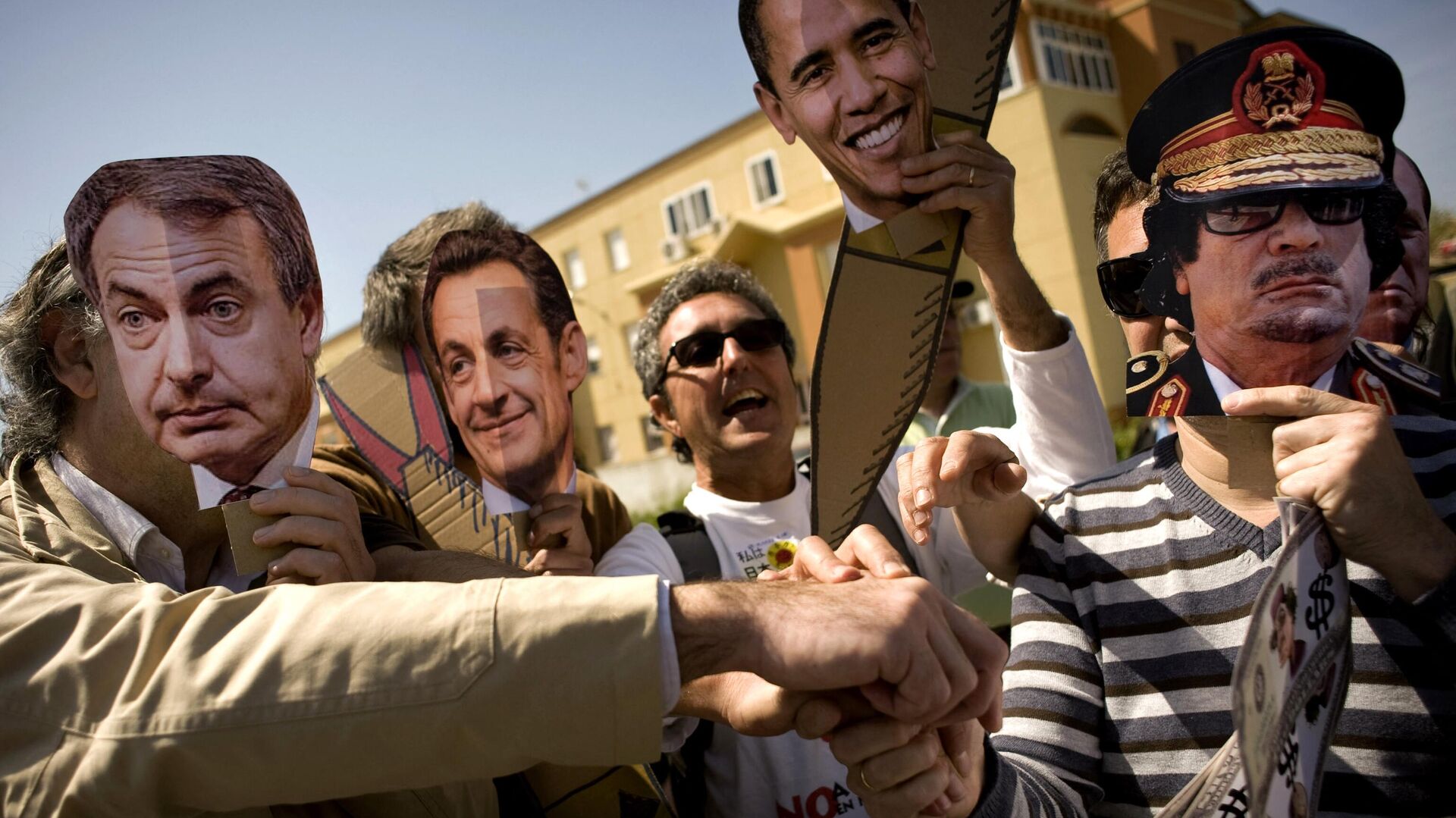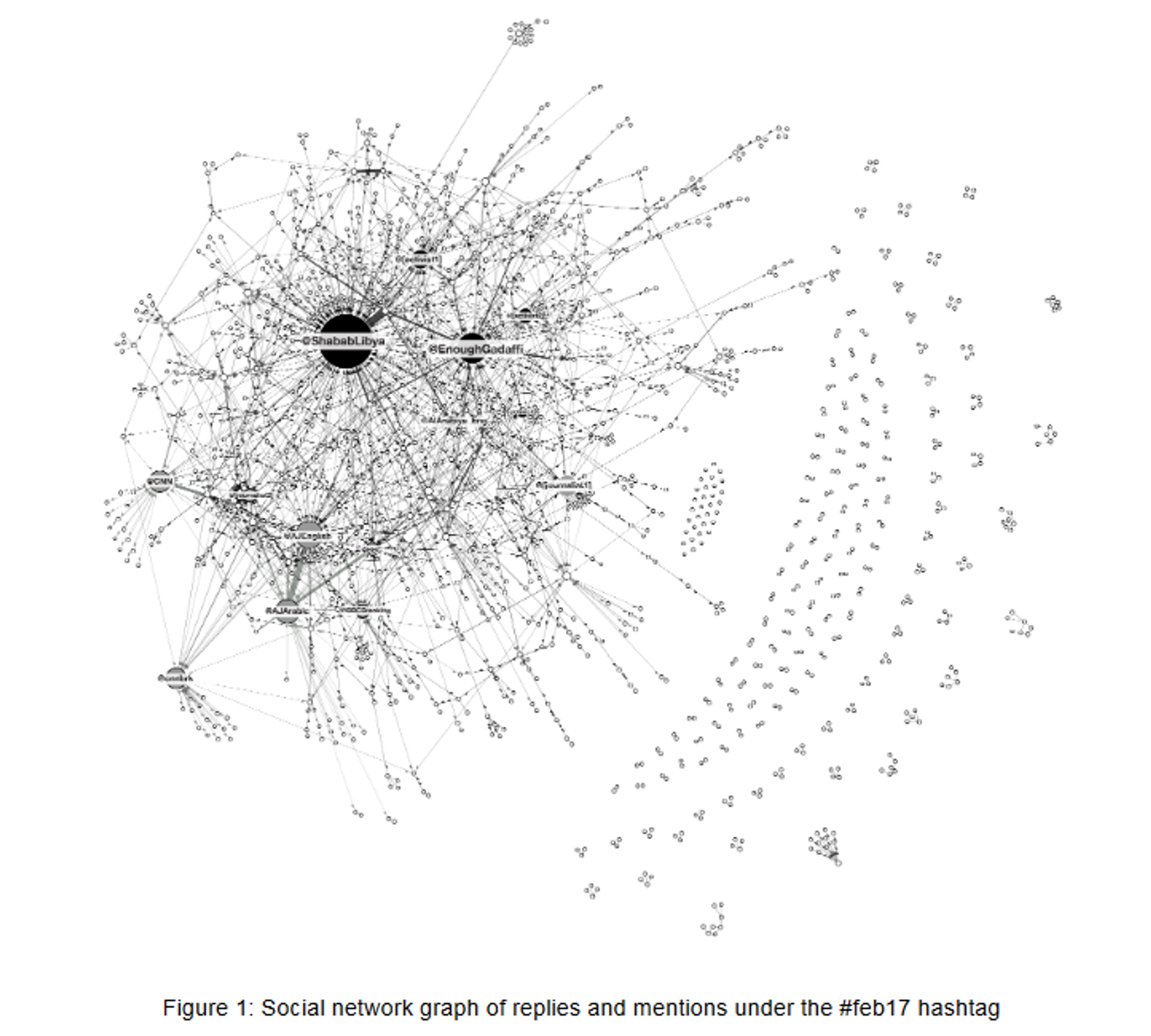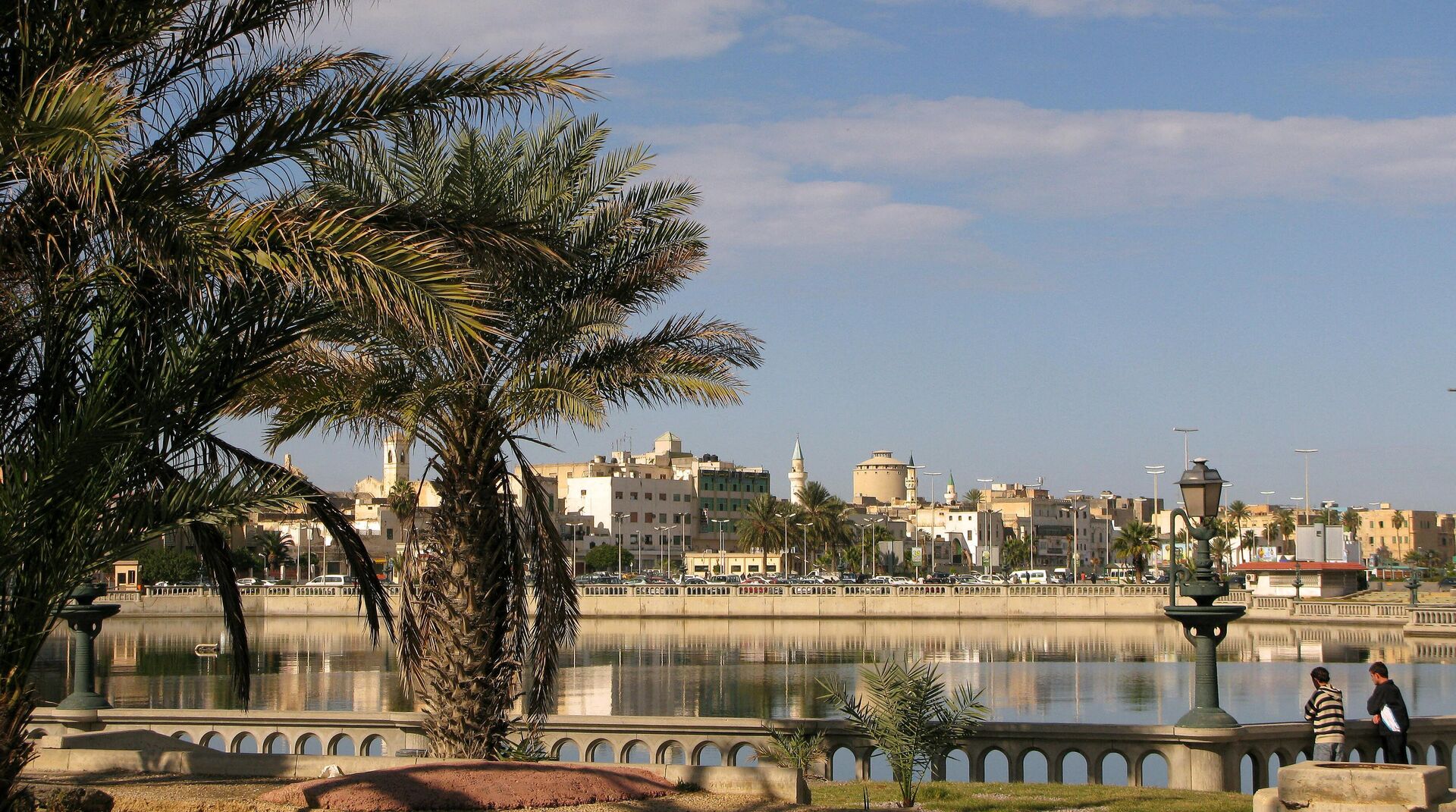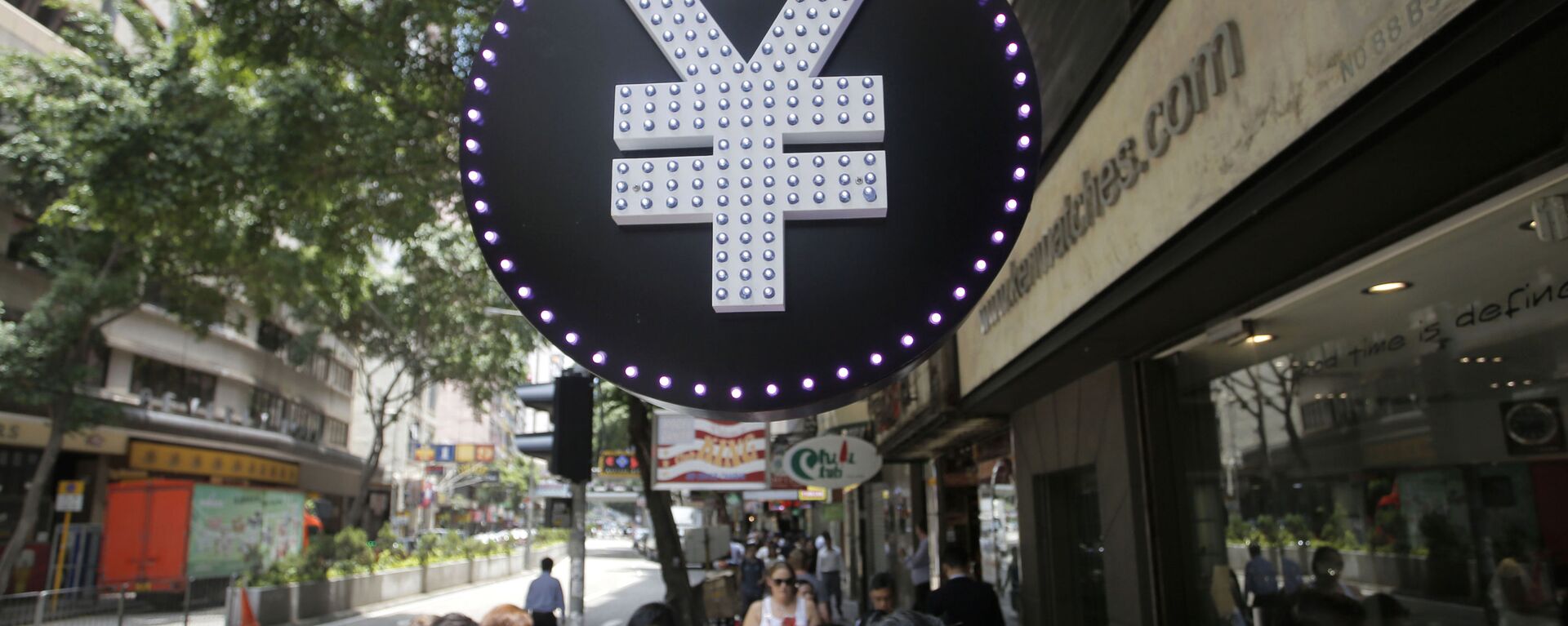https://sputnikglobe.com/20230215/from-arab-spring-to-failed-state-winter-how-gaddafis-misplaced-trust-in-the-west-led-to-his-demise-1107470635.html
From Arab Spring to Failed State Winter: How Gaddafi’s Misplaced Trust in the West Led to His Demise
From Arab Spring to Failed State Winter: How Gaddafi’s Misplaced Trust in the West Led to His Demise
Sputnik International
Wednesday marks the 12-year anniversary of the first anti-Gaddafi protests in Benghazi, which quickly grew into a foreign-backed uprising, NATO intervention and ultimately, Libya’s breakup into warring statelets. Was there any way for Libya to avoid its fate? Sputnik explores.
2023-02-15T17:53+0000
2023-02-15T17:53+0000
2023-02-15T18:56+0000
muammar gaddafi
libya after gaddafi
muammar gaddafi
libya
conflict in libya
2011 libya military intervention
libyan war
libyan crisis
libyan civil war
sputnik explains
https://cdn1.img.sputnikglobe.com/img/07e7/02/0f/1107472918_0:159:3079:1890_1920x0_80_0_0_d97b781c63ff483076f15b5f0a2dc4f2.jpg
On February 15, 2011, about 200 protesters gathered outside the police headquarters building in Benghazi, Libya’s second city, to protest the arrest of local lawyer and rights activist Fathi Terbil and demand his release. A police crackdown and dozens of arrests pushed more demonstrators into the streets, with rioters clashing with security forces, setting cars ablaze and burning down police buildings. The same day, protests erupted in the eastern industrial city of Bayda, and the suburb of Zintan near Tripoli, the capital, in the country’s west, with demonstrators similarly setting fire to police and government buildings, trying to set up makeshift tent encampments in the center of town (in Zintan), and calling for the “end of the regime.” Two days later, protesters organized an Egyptian "Arab Spring"-inspired "Day of Revolt," with opposition social media accounts, many of them operating from outside Libya, actively spreading the #feb17 hashtag to encourage “all” groups opposed to Gaddafi to take to the streets. In 2013, Umea University researcher Simon Lindgren mapped social network activity with mentions of the #feb17 hashtag, discovering that four of the six most-viewed accounts were based in the US and the UAE, with another run by a mysterious Libyan anti-Gaddafi "activist organization," and only one by an individual Libyan activist and citizen journalist.Western human rights groups were also activated to put pressure on Tripoli, and their own governments, to engage in the crisis. Less than 24 hours after the violence in Benghazi, Human Rights Watch issued a statement demanding that Libyan authorities “immediately free all activists, writers, and protesters” and “allow Libyans the right to protest peacefully.” News outlets from Qatar, the US, and the UK, including Al Jazeera, CNN, and the BBC, also quickly became focal points in the spread of pro-protester and anti-Gaddafi reports – including allegations that the government was ruthlessly mowing down unarmed demonstrators using tanks and helicopters.Like protesters in neighboring Tunisia and Egypt before them, organizers of the unrest in Libya managed to successfully tap into popular dissatisfaction with a government that had been in power for long. Unlike the "Arab Spring" protests in Tunisia and Egypt, however, the situation in Libya stood out in its immediate turn to violence. As even protester-sympathetic media reported at the time, police and security forces began to be injured or killed from the very first days of the unrest, with protesters storming police stations and army barracks, breaking into armories, executing unarmed police and government officials, and proudly announcing the killings of pro-Gaddafi “African mercenaries” (many of whom turned out to be police and army personnel from Libya’s black minority).Within two weeks, the unrest in Libya escalated into a full-blown civil war, with rebels capturing Benghazi and other cities in the east and south before making a push toward Tripoli. On February 27, the so-called "Transitional National Council" proclaimed itself the “only legitimate body representing the people of Libya and the Libyan state.” A few weeks later, on March 19, 2011, NATO began a 222-day aerial bombardment of the North African country, culminating in Gaddafi’s overthrow, capture, torture, rape, and murder in Sirte, northern Libya on October 20, 2011.What Libyans Lost: A Literal African OasisBefore 2011, the "Arab Spring" and NATO’s fateful intervention, Libya consistently ranked among the top economies on the continent in per capita PPP GDP terms, with Libyans enjoying one of the most generous welfare states in the developing world – including guaranteed free education up to the university level, free health care, and generous subsidies for gasoline, utilities, housing, and basic foodstuffs.One of Muammar Gaddafi’s most significant achievements was the "Great Man-Made River" project – a massive irrigation project consisting of over 2,800 km of underground pipelines and aqueducts which brought fresh water under the Sahara not only to major cities along the Mediterranean coast, but settlements deep in the Libyan heartland.It’s not without a sense of historical symbolism that during NATO’s bombardment, the alliance deliberately targeted the irrigation infrastructure, citing the purported deployment of government forces nearby. After Gaddafi’s ouster, much of the manmade river network quickly fell into disrepair, with recent UNICEF reports warning that four million of Libya’s population of 6.7 million currently face water shortages of “crisis” proportions.Ordinary Libyans’ livelihoods under Gaddafi, and his government’s ability to spend lavishly on social programs and prestige projects, were undoubtedly attributable to the North African nation’s oil reserves –which at over 46 billion barrels’ in proven reserves in 2010 were the largest in Africa and among the 10 largest in the world. But being blessed with hydrocarbon wealth is no guarantee of prosperity. As the experience of Libya’s African brothers like Angola, Nigeria, and Sudan have shown, oil wealth can become a curse if it’s concentrated in the hands of a few individuals or companies, or worse – foreign investors. Gaddafi’s solution was to tightly regulate the activities of foreign oil companies operating in the country, and to keep over 70 percent of the oil sector under state control.Could Gaddafi Have Avoided His Fate?One of the nagging historical "what ifs" often asked in the aftermath of Libya's post-Gaddafi collapse is whether his fall was inevitable, and whether there was anything Tripoli or other countries could have done to prevent the North African nation from turning into a failed state.One view is that Gaddafi’s fate was sealed two decades before his overthrow, with the 1991 collapse of the Soviet Union, Libya’s long-time superpower ally, depriving Tripoli of its main foreign guarantor of security. Over the next two decades, he, like Iraqi leader Saddam Hussein, the Assad family in Syria, and the Islamic Republic of Iran were seen by imperiously-minded politicians in Washington as Cold War leftovers that needed to be dealt with. In 2007, former NATO Europe Supreme Allied Commander General Wesley Clark revealed that the Pentagon had placed Libya on a seven-country hit list immediately after the 9/11 terror attacks as part of a grandiose US plan to reshape the entire Middle East.The bloody nose the US got in Iraq seemed to have tamed Washington’s appetite for removing governments which refused to submit to American hegemony through an open boots on the ground invasion, but not its intent and desire to take out its perceived adversaries (as both the NATO aerial operation in Libya and the dirty war in Syria attest to).Financing Western PoliticiansGaddafi undoubtedly realized his post-Cold War predicament, and attempted to buy time for himself by cozying up to the US and European governments, allegedly sponsoring French President Nicolas Sarkozy’s 2007 election campaign (Sarkozy "paid back" this apparent generosity as one of the lead instigators of the NATO bombing campaign in 2011) and negotiating agreements with European countries to help Europe in its efforts to curb immigration from the Middle East and Africa.WMD Commitments to the USIn December 2003, nine months after the US invasion of Iraq, Muammar Gaddafi announced that Libya would renounce its weapons of mass destruction programs and allow US, British, and other foreign inspectors to enter the country to dismantle its chemical weapons and the fledgling nuclear program. The move, designed to placate Washington and its allies and convince the West that Tripoli was not a threat, was complemented by the elimination of Tripoli’s longest-range ballistic missiles – which could reach much of Southern Europe and the Balkans.The goodwill gesture proved a major coup for Bush-era Secretary of State Condoleezza Rice, for whom Gaddafi apparently established a personal affection and dubbed her his “African princess” and the "Black Flower in the White House." In her memoirs, Rice appeared to express genuine surprise over Gaddafi’s WMD gambit, recalling that “at first we didn’t put much faith in the overture,” before deciding to send a joint CIA/MI6 team “to assess the situation.”In 2017, looking back on the Western-backed uprising and NATO bombing campaign which ousted Gaddafi, Rice indicated that she “was very, very glad that we had disarmed [Gaddafi] of his most dangerous weapons of mass destruction,” and said she had “no doubt that he would have used them” to make “his land stand” against the NATO-backed rebels.No Help From PartnersNATO’s campaign was based on a United Nations Security Council resolution that imposed a no-fly zone over Libya, with Russia and China tricked into failing to veto the initiative.It didn’t help matters that Vladimir Putin, who called the Security Council resolution “flawed” and compared it to a “medieval call for a crusade,” was serving as Russia’s prime minister at the time, and had no say on foreign policy matters. Then-President Dmitry Medvedev publicly clashed with Putin at the time, saying he did “not consider the resolution wrong” and that on the whole, it reflected Moscow’s “understanding of what is happening in Libya.” China followed Russia’s lead in abstaining from voting on or vetoing the resolution, with rotating Security Council members Brazil, Germany, and India also abstaining.Biggest ‘Sin’: Threatening the PetrodollarBut it may have been Gaddafi’s ambitious "gold dinar" idea – which envisioned a pan-African, gold-backed currency challenging the dollar, which sealed his fate and ultimately guaranteed Western intervention. On the eve of the 2011 uprising, Gaddafi was reportedly sitting on some 143 tons of gold worth over $9.1 billion in today’s dollars, and actively lobbying other African and Middle Eastern countries to support the gold dinar idea.An email from the Hillary Clinton Email Archive published by WikiLeaks by former Clinton advisor Sidney Blumenthal confirms that the gold dinar was definitely on the State Department’s radar when the anti-Gaddafi uprising began. In the April 2011 message, titled “Re: France’s client & Gaddafi’s gold,” Blumenthal pointed out to then-Secretary of State Hillary Clinton that the Libyan gold “accumulated prior to the current rebellion…was intended to be used to establish a pan-African currency based on the Libyan golden Dinar."According to the advisor, "this plan was designed to provide the Francophone African Countries with an alternative to the French franc,” and thus became one of the main motivators explaining Sarkozy’s passionate support for the NATO attack on Libya, given concerns “over Gaddafi’s long term plans to supplant France as the dominant power in Francophone Africa.”Blumenthal did not delve into any details regarding Washington’s own obvious motivations for stopping the gold dinar. However, as the current global crisis and Western tensions with Russia, China, and rising Gulf countries clearly demonstrates, America’s preeminent interest in preventing the crumbling of the petrodollar, which hasn’t been backed by anything since 1971, is central to its overall global strategy.
https://sputnikglobe.com/20230130/stoltenbergs-asia-trip-highlights-nato-appetite-for-global-anti-china-anti-russia-bloc-scholars-1106833507.html
https://sputnikglobe.com/20220315/goodbye-petrodollar-riyadh-reportedly-weighs-accepting-chinese-yuan-for-oil-purchases-1093904079.html
libya
Sputnik International
feedback@sputniknews.com
+74956456601
MIA „Rossiya Segodnya“
2023
News
en_EN
Sputnik International
feedback@sputniknews.com
+74956456601
MIA „Rossiya Segodnya“
Sputnik International
feedback@sputniknews.com
+74956456601
MIA „Rossiya Segodnya“
muammar gaddafi, anniversary, uprising, protests, analysis, what-if, history, historical what-if
muammar gaddafi, anniversary, uprising, protests, analysis, what-if, history, historical what-if
On February 15, 2011, about 200 protesters gathered outside the police headquarters building in Benghazi, Libya’s second city, to protest the arrest of local lawyer and rights activist Fathi Terbil and demand his release. A police crackdown and dozens of arrests pushed more demonstrators into the streets, with rioters clashing with security forces, setting cars ablaze and burning down police buildings. The same day, protests erupted in the eastern industrial city of Bayda, and the suburb of Zintan near Tripoli, the capital, in the country’s west, with demonstrators similarly setting fire to police and government buildings, trying to set up makeshift tent encampments in the center of town (in Zintan), and calling for the “end of the regime.”
Two days later, protesters organized an Egyptian "Arab Spring"-inspired "Day of Revolt," with opposition social media accounts, many of them operating from outside Libya, actively spreading the #feb17 hashtag to encourage “all” groups opposed to Gaddafi to take to the streets. In 2013, Umea University researcher Simon Lindgren mapped social network activity with mentions of the #feb17 hashtag,
discovering that four of the six most-viewed accounts were based in the US and the UAE, with another run by a mysterious Libyan anti-Gaddafi "activist organization," and only one by an individual Libyan activist and citizen journalist.
Western human rights groups were also activated to put pressure on Tripoli, and their own governments, to engage in the crisis. Less than 24 hours after the violence in Benghazi, Human Rights Watch issued a
statement demanding that Libyan authorities “immediately free all activists, writers, and protesters” and “allow Libyans the right to protest peacefully.” News outlets from Qatar, the US, and the UK, including Al Jazeera, CNN, and the BBC, also quickly became focal points in the spread of pro-protester and anti-Gaddafi reports – including allegations that the government was ruthlessly mowing down unarmed demonstrators using tanks and helicopters.
Like protesters in neighboring Tunisia and Egypt before them, organizers of the unrest in Libya managed to successfully tap into popular dissatisfaction with a government that had been in power for long. Unlike the "Arab Spring" protests in Tunisia and Egypt, however, the situation in Libya stood out in its immediate turn to violence. As even protester-sympathetic media reported at the time, police and security forces began to be injured or killed from the very first days of the unrest, with protesters storming police stations and army barracks, breaking into armories,
executing unarmed police and government officials, and proudly announcing the killings of pro-Gaddafi “African mercenaries” (many of whom
turned out to be police and army personnel from Libya’s black minority).
Within two weeks, the unrest in Libya escalated into a full-blown civil war, with rebels capturing Benghazi and other cities in the east and south before making a push toward Tripoli. On February 27, the so-called "Transitional National Council" proclaimed itself the “only legitimate body representing the people of Libya and the Libyan state.” A few weeks later, on March 19, 2011, NATO began a 222-day aerial bombardment of the North African country, culminating in Gaddafi’s overthrow, capture, torture, rape, and murder in Sirte, northern Libya on October 20, 2011.
What Libyans Lost: A Literal African Oasis
Before 2011, the "Arab Spring" and NATO’s fateful intervention, Libya
consistently ranked among the top economies on the continent in per capita PPP GDP terms, with Libyans enjoying one of the
most generous welfare states in the developing world – including guaranteed free education up to the university level, free health care, and
generous subsidies for gasoline, utilities, housing, and basic foodstuffs.
One of Muammar Gaddafi’s most significant achievements was the "
Great Man-Made River" project – a massive irrigation project consisting of over 2,800 km of underground pipelines and aqueducts which brought fresh water under the Sahara not only to major cities along the Mediterranean coast, but settlements deep in the Libyan heartland.
It’s not without a sense of historical symbolism that during NATO’s bombardment, the alliance
deliberately targeted the irrigation infrastructure,
citing the purported deployment of government forces nearby. After Gaddafi’s ouster, much of the manmade river network quickly
fell into disrepair, with recent UNICEF reports
warning that four million of Libya’s population of 6.7 million currently face water shortages of “crisis” proportions.
Ordinary Libyans’ livelihoods under Gaddafi, and his government’s ability to spend lavishly on social programs and prestige projects, were undoubtedly attributable to the North African nation’s oil reserves –which at over 46 billion barrels’ in proven reserves in 2010 were the largest in Africa and among the 10 largest in the world. But being blessed with hydrocarbon wealth is no guarantee of prosperity. As the experience of Libya’s African brothers like Angola, Nigeria, and Sudan have shown, oil wealth can become a curse if it’s concentrated in the hands of a few individuals or companies, or worse – foreign investors. Gaddafi’s solution was to
tightly regulate the activities of foreign oil companies operating in the country, and to keep over 70 percent of the oil sector under state control.
Could Gaddafi Have Avoided His Fate?
One of the nagging historical "what ifs"
often asked in the aftermath of Libya's post-Gaddafi collapse is whether his fall was inevitable, and whether there was anything Tripoli or other countries could have done to prevent the North African nation from turning into a failed state.
One view is that Gaddafi’s fate was sealed two decades before his overthrow, with the 1991 collapse of the Soviet Union, Libya’s long-time superpower ally, depriving Tripoli of its main foreign guarantor of security. Over the next two decades, he, like Iraqi leader Saddam Hussein, the Assad family in Syria, and the Islamic Republic of Iran were seen by imperiously-minded politicians in Washington as Cold War leftovers that needed to be dealt with. In 2007, former NATO Europe Supreme Allied Commander General Wesley Clark
revealed that the Pentagon had placed Libya on a seven-country hit list immediately after the 9/11 terror attacks as part of a grandiose US plan to reshape the entire Middle East.
The bloody nose the US got in Iraq seemed to have tamed Washington’s appetite for removing governments which refused to submit to American hegemony through an open boots on the ground invasion, but not its intent and desire to take out its perceived adversaries (as both the NATO aerial operation in Libya and the dirty war in Syria attest to).
Financing Western Politicians
Gaddafi undoubtedly realized his post-Cold War predicament, and attempted to buy time for himself by cozying up to the US and European governments,
allegedly sponsoring French President Nicolas Sarkozy’s 2007 election campaign (Sarkozy "paid back" this apparent generosity as one of the lead instigators of the NATO bombing campaign in 2011) and
negotiating agreements with European countries to help Europe in its efforts to curb immigration from the Middle East and Africa.
WMD Commitments to the US
In December 2003, nine months after the US invasion of Iraq, Muammar Gaddafi announced that Libya would
renounce its weapons of mass destruction programs and allow US, British, and other foreign inspectors to enter the country to dismantle its chemical weapons and the fledgling nuclear program. The move, designed to placate Washington and its allies and convince the West that Tripoli was not a threat, was
complemented by the elimination of Tripoli’s longest-range ballistic missiles – which could reach much of Southern Europe and the Balkans.
The goodwill gesture proved a
major coup for Bush-era Secretary of State Condoleezza Rice, for whom Gaddafi apparently established a personal affection and dubbed her his
“African princess” and the
"Black Flower in the White House." In her memoirs, Rice appeared to express genuine surprise over Gaddafi’s WMD gambit, recalling that “at first we didn’t put much faith in the overture,” before deciding to send a joint CIA/MI6 team “to assess the situation.”
In 2017, looking back on the Western-backed uprising and NATO bombing campaign which ousted Gaddafi, Rice
indicated that she “was very, very glad that we had disarmed [Gaddafi] of his most dangerous weapons of mass destruction,” and said she had “no doubt that he would have used them” to make “his land stand” against the NATO-backed rebels.
NATO’s campaign was based on a United Nations Security Council resolution that imposed a no-fly zone over Libya, with Russia and China tricked into
failing to veto the initiative.
It didn’t help matters that Vladimir Putin, who called the Security Council resolution “flawed” and compared it to a
“medieval call for a crusade,” was serving as Russia’s prime minister at the time, and had no say on foreign policy matters. Then-President Dmitry Medvedev publicly clashed with Putin at the time, saying he did “not consider the resolution wrong” and that on the whole, it reflected Moscow’s “understanding of what is happening in Libya.” China followed Russia’s lead in abstaining from voting on or vetoing the resolution, with rotating Security Council members Brazil, Germany, and India also abstaining.

30 January 2023, 18:57 GMT
Biggest ‘Sin’: Threatening the Petrodollar
But it may have been Gaddafi’s ambitious "
gold dinar" idea – which envisioned a pan-African, gold-backed currency challenging the dollar, which sealed his fate and ultimately guaranteed Western intervention. On the eve of the 2011 uprising, Gaddafi was reportedly sitting on some
143 tons of gold worth over $9.1 billion in today’s dollars, and actively lobbying other African and Middle Eastern countries to support the gold dinar idea.
An email from the Hillary Clinton Email Archive published by WikiLeaks by former Clinton advisor Sidney Blumenthal confirms that the gold dinar was definitely on the State Department’s radar when the anti-Gaddafi uprising began. In the
April 2011 message, titled “Re: France’s client & Gaddafi’s gold,” Blumenthal pointed out to then-Secretary of State Hillary Clinton that the Libyan gold “accumulated prior to the current rebellion…was intended to be used to establish a pan-African currency based on the Libyan golden Dinar."
According to the advisor, "this plan was designed to provide the Francophone African Countries with an alternative to the French franc,” and thus became one of the main motivators explaining Sarkozy’s passionate support for the NATO attack on Libya, given concerns “over Gaddafi’s long term plans to supplant France as the dominant power in Francophone Africa.”
Blumenthal did not delve into any details regarding Washington’s own obvious motivations for stopping the gold dinar. However, as the current global crisis and Western tensions with Russia, China, and rising Gulf countries clearly demonstrates, America’s preeminent interest in preventing the crumbling of the petrodollar, which hasn’t been backed by anything since 1971, is central to its overall global strategy.






